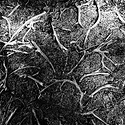removedacct3
Member
What is the best practice for Divided D-23?
After reading various web resources it seems to me that one should use a normal agitation scheme when the film is emerged in the first bath, the 'normal' D-23 developer bath. Time is critical, the longer souped in the first bath, the denser the negatives.
The information gets a bit fuzzy regarding the second bath. There is no definite answer what the second bath should be consist of, how long the film should be in it and, whether or not one should agitate the second bath.
Hence, the question .... what are the best practices for using Divided D-23?
And a second, related, question. If you do not agitate while the film is in the second bath, will develop stop on completion? Or is the second bath, even without agitation, time critical?
Looking forward to your responses!
Marcel
After reading various web resources it seems to me that one should use a normal agitation scheme when the film is emerged in the first bath, the 'normal' D-23 developer bath. Time is critical, the longer souped in the first bath, the denser the negatives.
The information gets a bit fuzzy regarding the second bath. There is no definite answer what the second bath should be consist of, how long the film should be in it and, whether or not one should agitate the second bath.
Hence, the question .... what are the best practices for using Divided D-23?
And a second, related, question. If you do not agitate while the film is in the second bath, will develop stop on completion? Or is the second bath, even without agitation, time critical?
Looking forward to your responses!
Marcel










